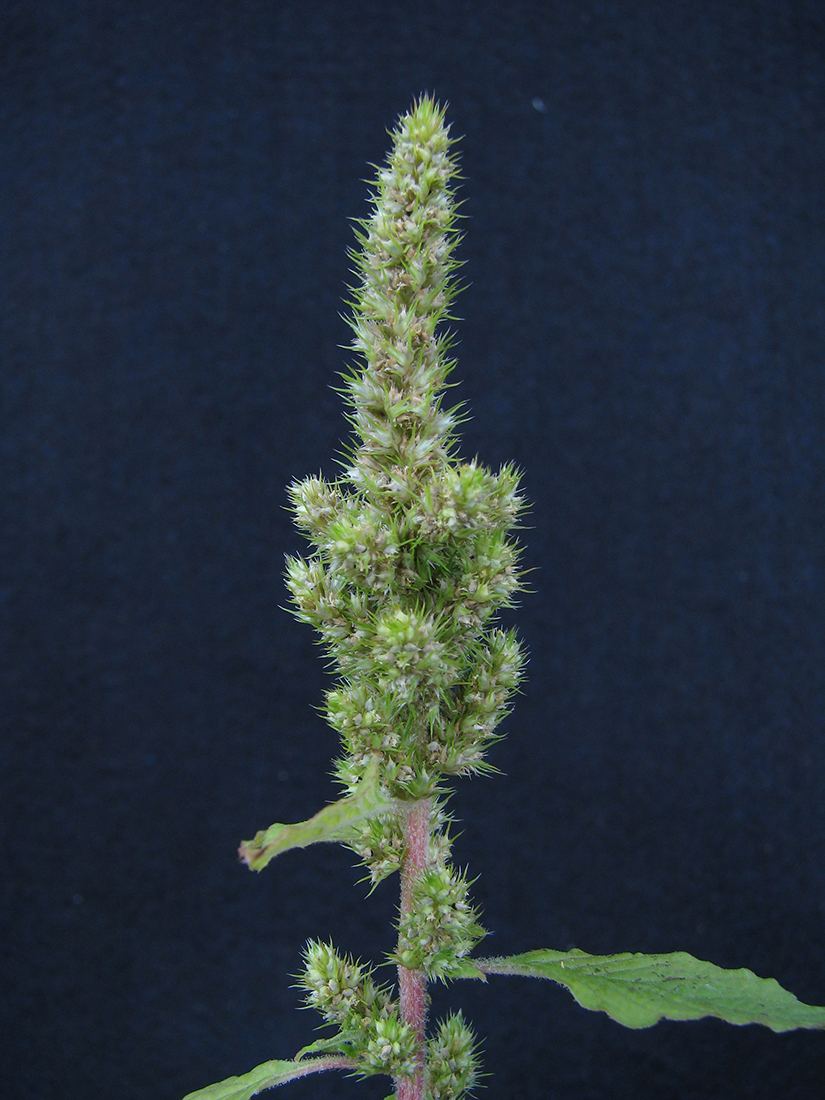Redroot Pigweed
- Pigweed (Amaranthaceae family):
- Amaranthus retroflexus L.
- EPPO code:
- AMARE
- Other names:
- Pigweed, redroot, rough pigweed, tall pigweed
Species information
- Lifecycle:
- Annual
- Propagation:
- Reproduces by seed.
- Emergence:
- Spring, typically after lamb’s-quarters.
- Habitat:
- Found in most cultivated fields. Less prevalent in winter cereals and established forage crops.
- Competitiveness:
- University of Guelph research examined competition in corn with pigweed at densities ranging from 16,000–32,000 plants/ac. When emerging at the 3–4 leaf stage of corn, yield losses range between 22–52%. However, when emergence was delayed until the 6–7 leaf stage, the impact on corn yield loss was reduced by 50%.
- Resistance:
- A number of populations are resistant to Group 2 (for example, imazethapyr) and Group 5 (for example, atrazine) herbicides in Ontario and throughout North America.
Identification clues
Seedlings
- Cotyledons:
- Linear, narrow, purple-red underneath.
- Mature leaves:
- Ovate, dull green and somewhat hairy, has a small notch with a spine (mucron) at the tip.
Mature plant
- Stem:
- Alternate leaf orientation; the stem is coarse with many short hairs.
- Seed heads:
- Seed heads have short, thick spikes that are very coarse to the touch.
- Roots:
- Taproot
Often mistaken for
I know it's not Waterhemp because the stem of redroot pigweed is covered in dense short hairs, whereas waterhemp is smooth and hairless. The tips of waterhemp leaves are not typically notched.
I know it's not Green pigweed because only the upper stem of green pigweed has a cluster of dense hairs whereas the stem of redroot pigweed is extremely hairy all over. The leaves of redroot pigweed are also a dull green compared to the more shiny leaves of green pigweed.
I know it's not Eastern black nightshade because young eastern black nightshade plants have pointed, almost diamond-shaped cotyledons compared to the linear cotyledons of pigweed species. The underside of eastern black nightshade leaves are typically a deep purple compared to the violet underside of pigweed species. The older leaves have wavy-toothed margins, whereas pigweed species lack the wavy-toothed margins.




